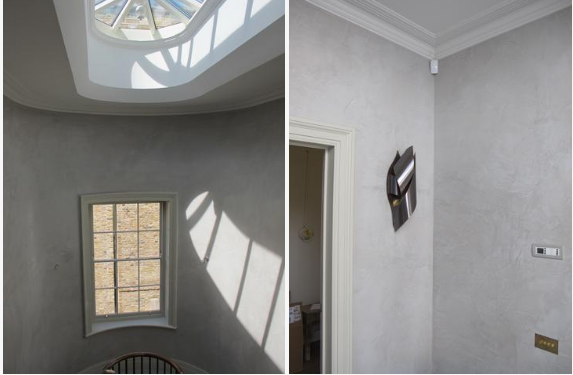
Marmorino Veneziano is a kind of stucco or plaster. It consists of calcium oxide and is mainly used for exterior and interior wall decorations in buildings. Marmorino plasters can be finished in various ways for a wide range of final effects that come in glossy, satin and matte. Its use can be traced right back to the Roman era. However, they became popular during the period of Renaissance in Venice about 500 years ago. Marmorino is made from putty and crushed marbles.
It can be easily tinted, which renders them a wide range of colour variety. It can then be used on the walls to give various kinds of effects ranging from natural stone to polished marble effects. Even though its use was initiated in Italy, it spread like a wildfire and is now being used worldwide! There are various companies in London that specialize in manufacturing marmorino plaster. Stucco Veneziano guarantees to provide ecological and the best quality plaster that will give your house and office a whole new look. They believe in providing them at a competitive price and gives utmost attention to the customer service.
Various mistakes that are commonly made while applying Marmorino plaster:
There are two types of Marmorino plasters available in the market. They are called Marmorino Fine and Grained Marmorino. Marmorino Fine is usually applied in the same way as any fine polished plaster. However, application of the latter is a completely different process altogether.
Here are the few common mistakes that are made while applying marmorino plaster:
1. Oil based primer: Usage of regular latex and oil-based primer will lead to an investment of a huge amount of working time when the very first coat is being applied. This material will fail to hold onto the surface that is primed, and will have to be manipulated with a trowel for a much longer time. In the end, after putting so much effort, the finish can also gradually peel off. Using a special primer containing silica will easily hold onto the initial coat. So, less time has to be spent to flatten the first coat.
2. Trowel usage: If you use the same trowel for Grained Marmorino plaster like you did in the case of Fine Venetian plaster, the final look will be highly flawed. It will end up leaving a lot of scratches on the finished surface. The proper trowel for this job is the Leppato stainless steel trowel. It will allow you to smoothly apply the first coat and then the second coat in a compact manner without having to roll the grains over.
3. Smaller amount: Applying an amount which is lesser than the required amount will end up leaving a lot if scratch and an extremely uneven finished surface. The end result will not be pleasing to the eyes. To avoid this, generously apply the material. Let the coat dry a bit before you flatten it down.
4. Flattening the second coat: Another common mistake that is often made is -- people tend to flatten the second coat right after its application. Doing this will create an utter mess and is a total waste of time. Allow the second coat to dry out to some extent, and then do the additional take off that might be required. However, this time, use lesser amount of material and squeeze out the juice from Marmorino.
Marmorino plasters are being used quite extensively because of the beautiful end results. It can completely change the look of your home or office in no time, and give it an elegant feel. Since applying it is quite labour intensive, it falls on the side of high-end market. So it is extremely crucial to follow the right steps and avoid making such mistakes.
Caitlyn Bell is an Arts student whose experiences in life make her really tougher than anyone else. She can lend you expert tips on diverse topics ranging from relationship to fashion, making money, health and so on. Her write-ups are a window into her thoughts and knowledge.
Post new comment
Please Register or Login to post new comment.